Fulfillment Units and Fulfillment Rules
In Alma, the Fulfillment Unit is the fundamental structural component that governs how items circulate within your institution.
A Fulfillment Unit is a logical grouping of one or more physical locations within your institution that all share and apply the same set of circulation policies.
Core Components and Their Roles
The Fulfillment Unit acts as a container for the following essential components, which work together to process circulation transactions:
Network Fulfillment Units (Consortial Environments)
In a consortial (shared) environment utilizing the Alma Network Zone (NZ), a Network Fulfillment Unit is used to manage circulation policies that apply across multiple institutions, such as consortial loan (CLS/AFN) transactions.
-
Function: It is possible for an Institution-only Fulfillment Unit to incorporate rules from a Network Fulfillment Unit (like the 'WRLC Fulfillment Network'). This allows for centralized management of shared policies.
-
Example: In your consortium, the 'WRLC Fulfillment Network' is the single NZ fulfillment unit containing all rules specific to CLS/AFN transactions.
To configure the use of Network Zone rules in a specific Fulfillment Unit, choose the WRLC Fulfillment Network from the drop-down menu in the Fulfillment Unit configuration page, under the option Use Rules From Network Fulfillment Unit. Do not checkmark 'Use Network Rules First.'
For more information on the rules and TOUs in the WRLC Fulfillment Network fulfillment unit, please see the Fulfillment Unit section of the AFN Network Zone Configurations page of the WRLC Alma Wiki.
Configuring a Fulfillment Unit
Fulfillment Units can be found in Configuration > Fulfillment > Physical Fulfillment > Fulfillment Units
*Please note that Fulfillment Units can be configured for entire institutions, or for specific libraries. Changing the Configuring drop-down menu at the top-left corner of the screen will change your results.
Creating (Adding) a Fulfillment Unit
-
Go to the Fulfillment Units List page.
-
Select Add Fulfillment Unit.
-
In the dialog box, enter a Code (required, max 10 characters) and a Name (required).
-
(Optional) Enter a Description.
-
Select an On shelf request policy to define how items can be requested when they are available on the shelf (e.g., Request for pickup anywhere regardless of availability or No requesting).
-
Select Add Fulfillment Unit to save the new unit.
Fulfillment Unit Details
-
On the Fulfillment Units List page, select the FU's Code or choose Edit from its row actions list.
-
The Edit Fulfillment Unit page appears, defaulting to the Fulfillment Unit Details tab.
-
In this tab, you can modify the general parameters you set during creation: the Code, Name, Description, and the On shelf request policy.
-
Save your changes. (Further configuration, such as associating Locations or defining Rules, is done by selecting the corresponding tabs.)
Fulfillment Unit Locations
-
On the Edit Fulfillment Unit page, select the Fulfillment Unit Locations tab.
-
To Attach Existing Location(s):
-
Select Attach Existing Location.
-
The Physical Locations List page appears. Select the location(s) you want to add, then select Select.
-
Note: A location can only be associated with one Fulfillment Unit.
-
-
For more information on how to create physical locations, please see the WRLC Alma Wiki page Physical Locations.
Fulfillment Unit Rules
Fulfillment Unit Rules are the method for attaching Terms of Use (TOU) to a Fulfillment Unit (FU). These rules determine which TOU applies to a specific patron service (Loan, Request, or Booking) based on various criteria.
For more information on how to create TOUs, please see the WRLC Alma Wiki page Terms of Use (TOU).
-
Access Rules Tab: Navigate to the Fulfillment Unit Rules tab within the "Edit Fulfillment Unit" page.
-
Select Rule Type: Choose the type of rule you are configuring: Booking, Loan, or Request.
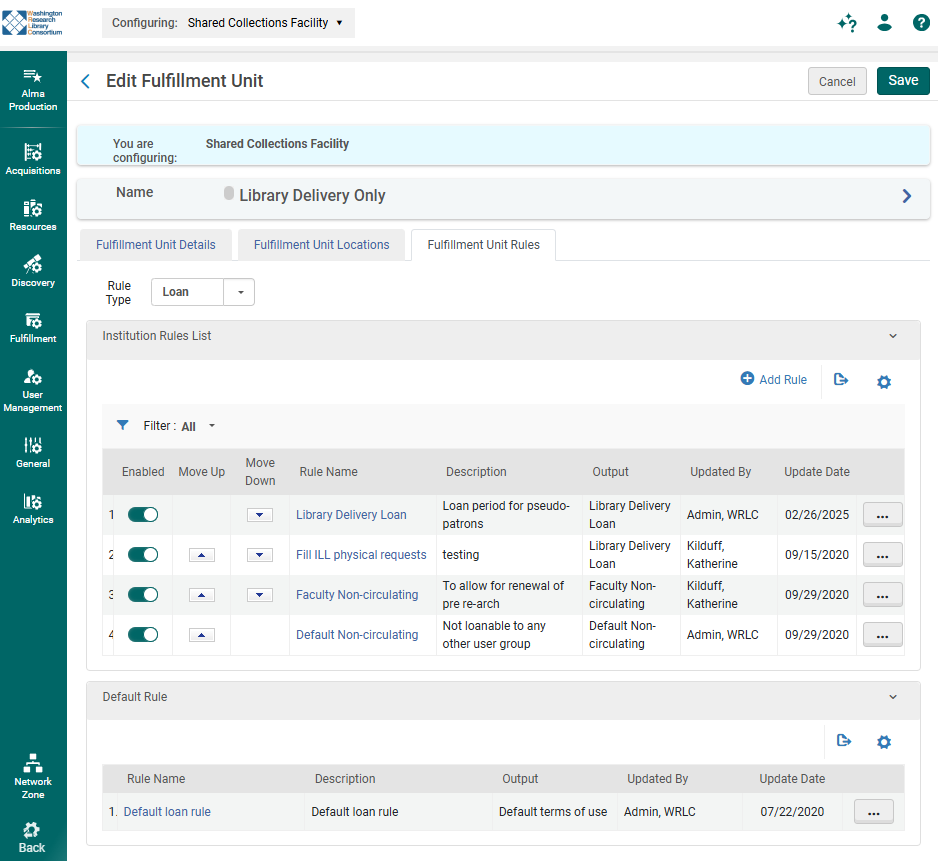
-
Add a New Rule: Select Add Rule to open the Fulfillment Unit Rules Editor.
-
Define Rule Details: Give the rule a Name (required) and an optional Description.
-
Set Input Parameters: Define the criteria that must be met for the rule to apply by specifying one or more Input Parameters. These are the conditional statements that filter which items or users the rule affects.
-
Components: Each parameter is defined by a Name (the field to check, e.g., Material Type), an Operator (e.g., equals), and a Value (e.g., DVD-ROM).
-
Possible Parameters include:
-
Material Type
-
Patron Affiliated Campus
-
Process Type
-
Location (circulation desk)
-
Job category (user role)
-
-
-
Set Terms of Use (Output Parameter): The rule's output is the Terms of Use (TOU) that will be applied if all the input parameters are met. Select the desired TOU from the Output Parameters section.
-
Rule Order: Rules are evaluated from top to bottom. If a rule's input parameters match, its associated Terms of Use is applied, and the system stops evaluating subsequent rules. Therefore, specific rules must be placed before more general rules. You use the up/down arrows to adjust the order.
For more information on how to configure Fulfillment Units, please see the Alma Knowledgebase page Configuring Fulfillment Units.
Understanding the Fulfillment Unit Hierarchy
The process of determining the final circulation policy follows a precise hierarchical order, which includes the evaluation of Network rules:
-
Start with the Location: When a patron attempts a transaction, Alma first identifies the Fulfillment Unit associated with the item’s Physical Location.
-
Determine Transaction Type: Alma immediately filters the relevant policies based on the type of transaction being performed (e.g., Loan, Request, or Booking). This restricts the evaluation to only the Fulfillment Rules associated with that category of Terms of Use.
-
Evaluate Institution Rules: Alma checks the list of Fulfillment Rules configured directly in the Institution-only Fulfillment Unit, evaluating them in their configured order.
-
Evaluate Network Rules: If no Institution Rule is met, Alma proceeds to evaluate the rules within the Network Fulfillment Unit (if one is configured for the Institution's unit). These rules are evaluated in their configured order.
-
Apply Default Rule: If no rule in either the Institution or Network unit is met, the system applies the final Default Rule at the end of the rule list.
-
Apply the TOU: The first Rule whose criteria are met (whether Institution, Network, or Default) will be triggered, and its linked Term of Use (TOU) will be applied to the transaction (e.g., a 3-week loan).

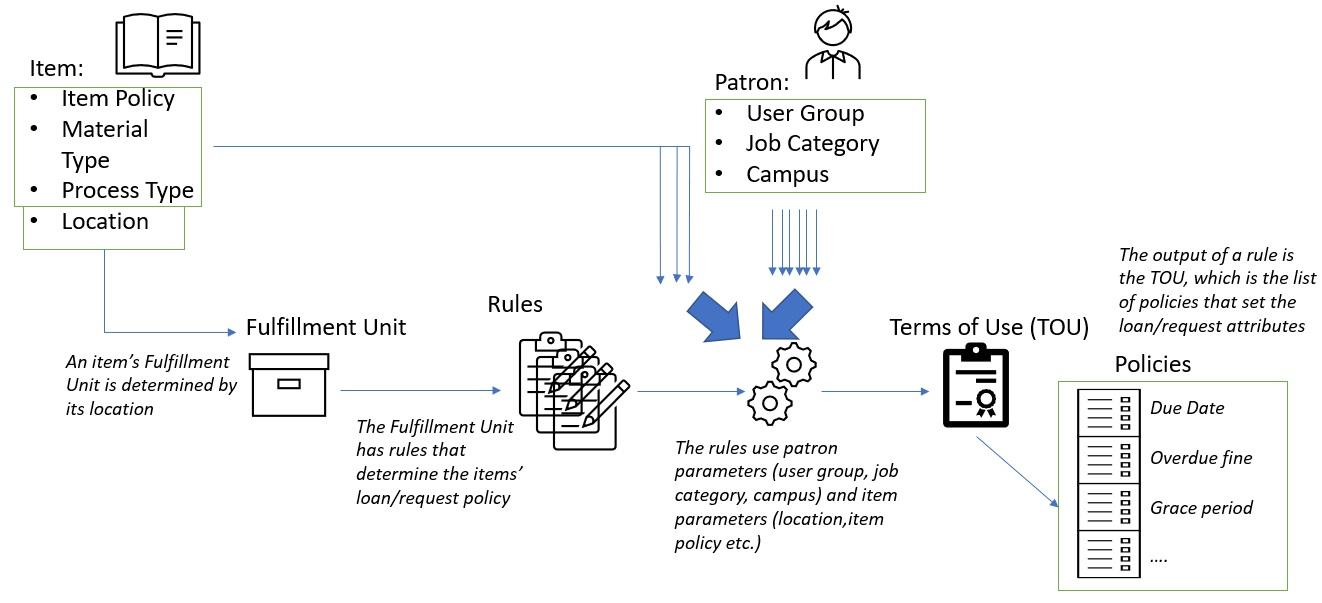
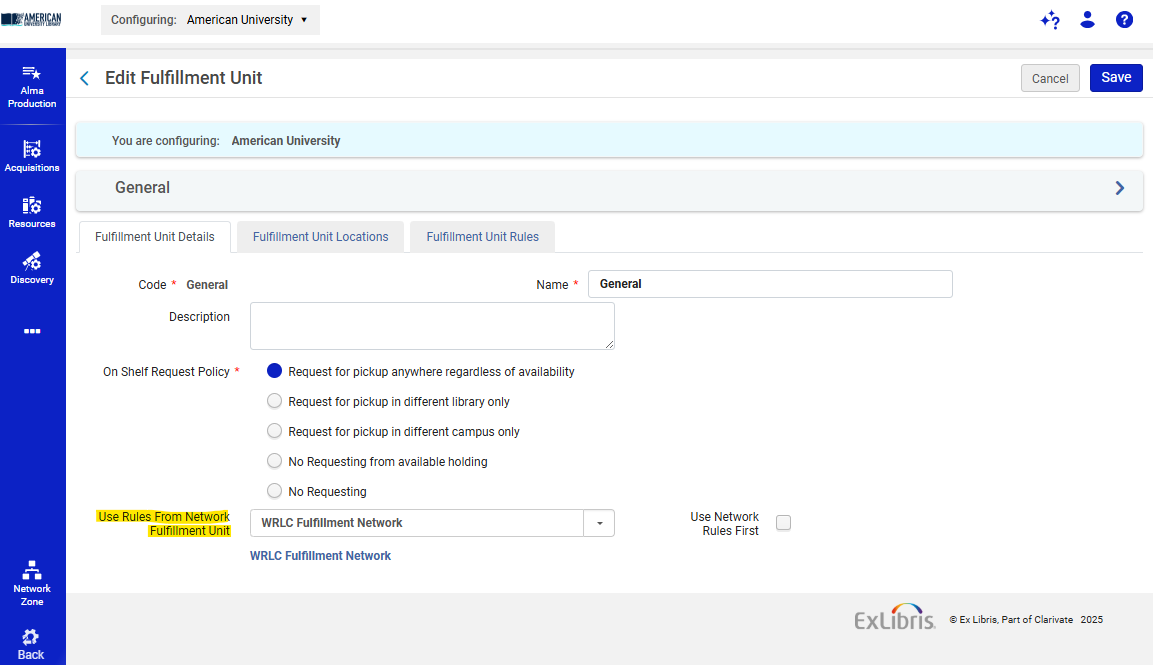
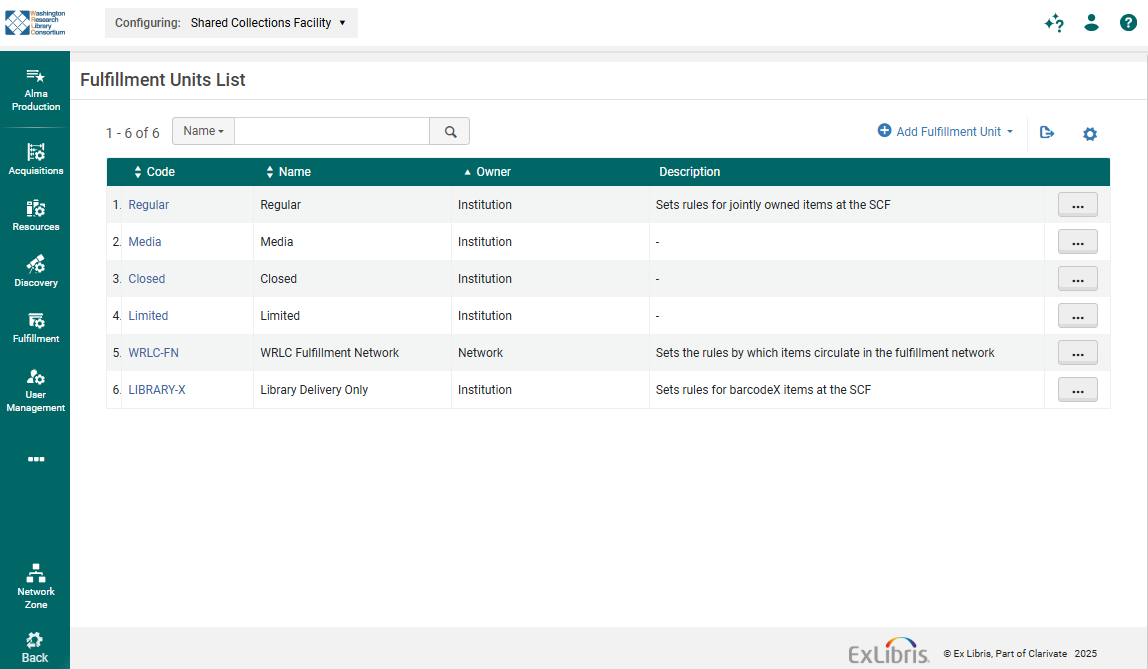
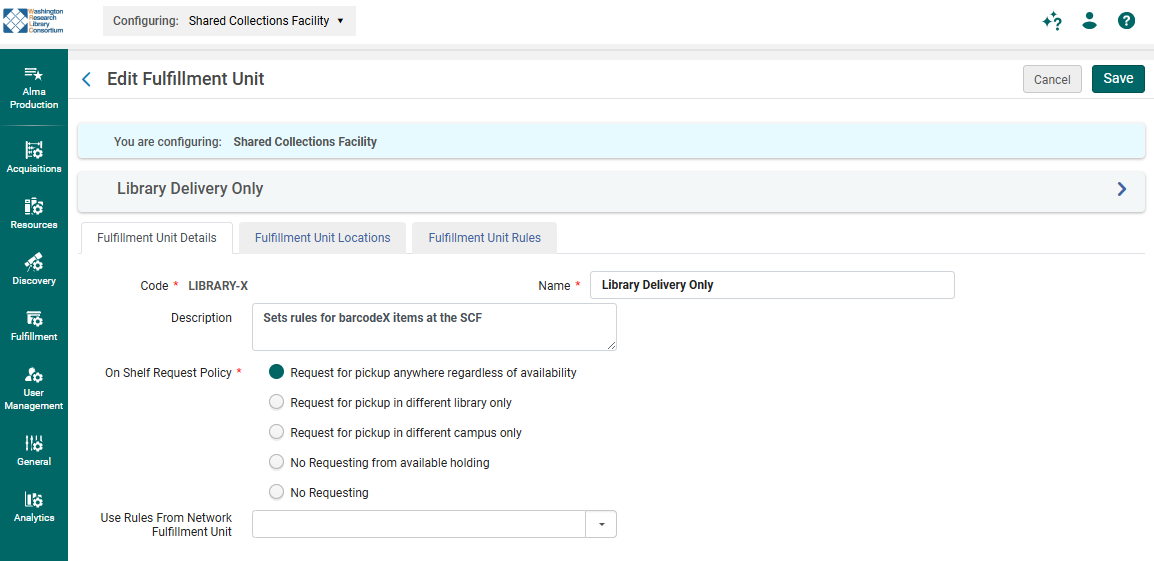
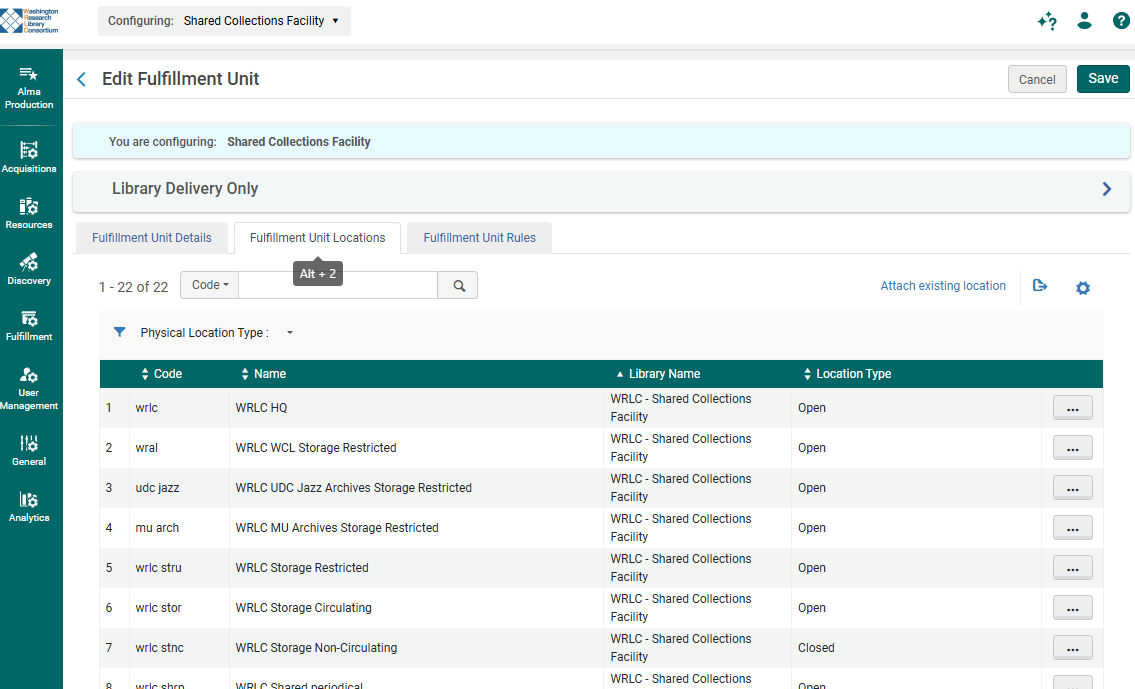
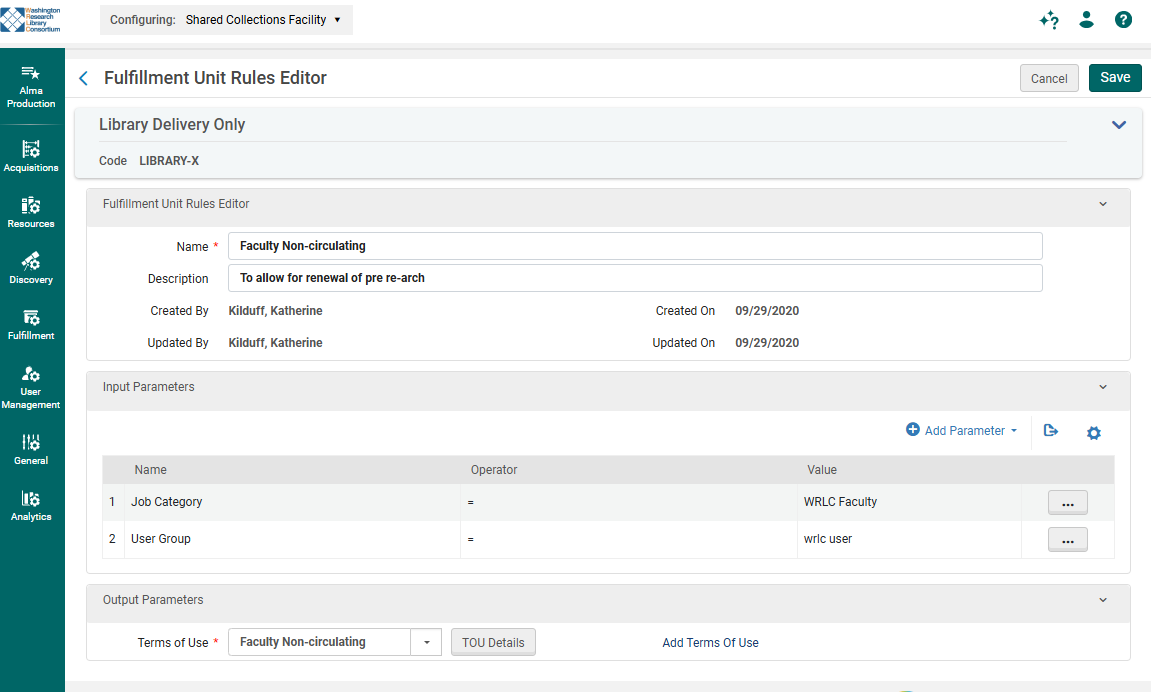
No comments to display
No comments to display